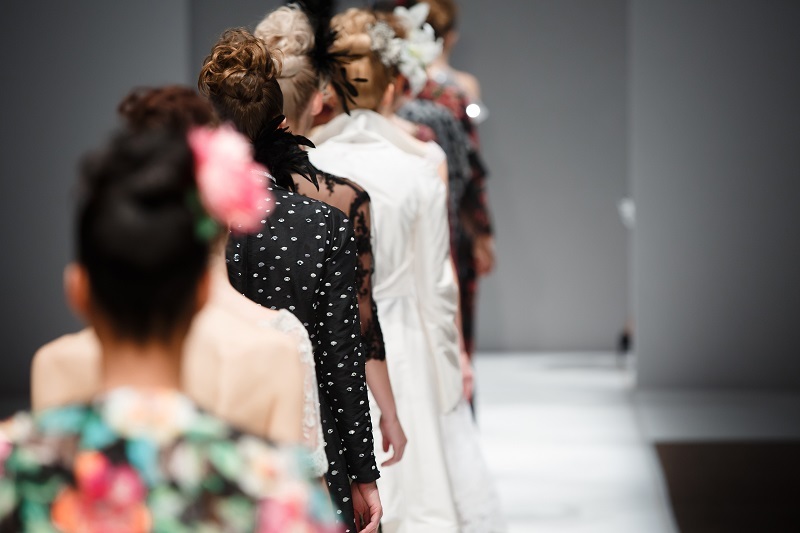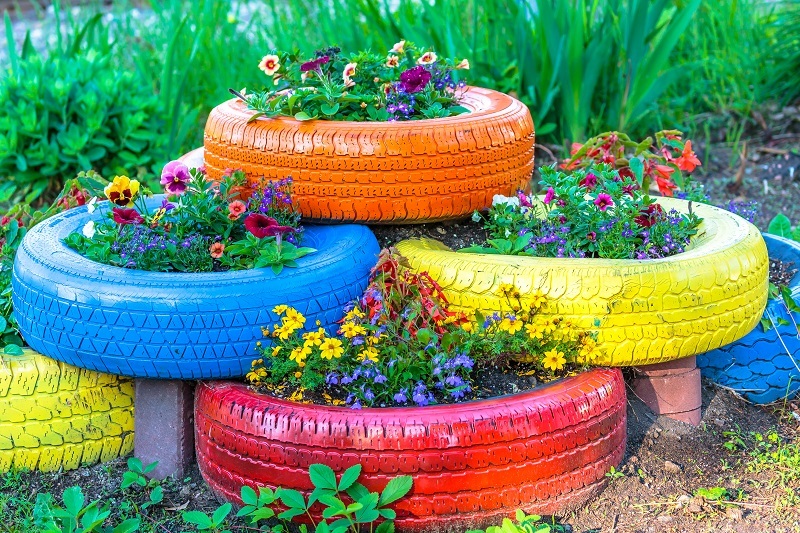Explore the unique meanings of birth month flowers and what they represent
Posted on 18/08/2025
Explore the Unique Meanings of Birth Month Flowers and What They Represent
Feeling connected to your birthday goes beyond just zodiac signs and birthstones--your birth month flowers hold a world of symbolism and meaning, too. Each month is represented by a specific blossom, with its own fascinating story, history, and significance. Whether you're looking to choose a meaningful bouquet, find the perfect birthday gift, or simply discover more about yourself, understanding birth flower meanings is both illuminating and fun.
What Are Birth Month Flowers?
Much like the Zodiac, the tradition of assigning birth flowers by month stretches back centuries. Originating from Roman times--and finding roots in Victorian floriography--every month is associated with certain blooms. Birth month flowers add a layer of personalization, symbolism, and beauty to your identity.
- They offer unique insights into your personality traits.
- They can inspire thoughtful floral gifts for birthdays and anniversaries.
- They reflect tradition, folklore, and cultural values.
How Are Birth Flowers Selected?
Different cultures have influenced birth flower choices, but the most commonly used list stems from English traditions, with some global variations. Assignments are often connected to flowering seasons, mythology, and symbolic meaning in the language of flowers. For example, the January birth flower blooms during the chilly start of the year, while the lively daisy rings in spring for April.

Complete Guide to Birth Month Flowers and Their Meanings
Let's explore each month's floral representative--including their symbolic meanings and cultural associations:
January: Carnation and Snowdrop
- Carnation: Admiration, love, fascination. This sturdy bloom survives winter's chill, symbolizing resilience and deep affection. Different colors have unique meanings--red stands for love, white for pure affection and remembrance, and pink is associated with gratitude.
- Snowdrop: Hope, rebirth, innocence. As one of the first flowers to bloom in the new year, the snowdrop signals optimism and the quiet beauty that follows adversity.
February: Violet and Primrose
- Violet: Loyalty, humility, faithfulness. Violets are modest, beautiful flowers famed for their delicate fragrance and lovely purple hues, symbolizing devotion.
- Primrose: Young love, renewal. This green-centric flower marks the first glimpses of spring, representing everlasting existence and fresh starts.
March: Daffodil (Narcissus)
- Daffodil: New beginnings, rebirth, hope. Heralding spring's arrival, the daffodil epitomizes rejuvenation and unbridled optimism. Gift a daffodil bouquet in March to symbolize joy and good fortune.
April: Daisy and Sweet Pea
- Daisy: Innocence, purity, loyal love. Daisies evoke the freshness of spring, bright new days, and wholesome relationships.
- Sweet Pea: Delicate pleasure, gratitude, departure. Sweet peas flaunt lovely scents and colors, expressing appreciation or bidding farewell to cherished times.
May: Lily of the Valley and Hawthorn
- Lily of the Valley: Sweetness, humility, renewed happiness. Known for their bell-shaped flowers, these delicate beauties symbolize innocence and regained joy.
- Hawthorn: Hope, supreme happiness. Hawthorn blossoms mark enduring love and a wish for happiness to whomever receives them.
June: Rose and Honeysuckle
- Rose: Love, passion, beauty. Undoubtedly the world's most famous flower, roses have nuanced meanings according to color: red for love, white for purity, yellow for friendship, and pink for admiration.
- Honeysuckle: Devoted affection. With their sweet scent, honeysuckles symbolize strong bonds and loyalty in relationships.
July: Larkspur and Water Lily
- Larkspur (Delphinium): Lightness, levity, positivity. With a spectrum of blue, pink, and purple shades, this flower signifies the joy and ease of summer days.
- Water Lily: Purity, enlightenment. Revered across many cultures, water lilies represent clarity, beauty, and spiritual awakening.
August: Gladiolus and Poppy
- Gladiolus: Strength, integrity, infatuation. Named for their sword-like leaves, gladioli symbolize moral character, remembrance, and passionate feelings.
- Poppy: Imagination, consolation, remembrance. Especially red poppies, which signify both peace and commemoration of those lost in war.
September: Aster and Morning Glory
- Aster: Wisdom, faith, valor. These star-shaped flowers are emblematic of patience and refined beauty, cherished since Ancient Greece.
- Morning Glory: Affection, unrequited love. Known for their quick blooms and fleeting display, morning glories serve as a poignant reminder to cherish the present.
October: Marigold and Cosmos
- Marigold (Calendula): Warmth, creativity, determination. Vibrant marigolds bring brightness to cool autumn days--often symbolizing positive energy and cheerful thoughts.
- Cosmos: Order, harmony, peace. Cosmos flowers inspire calmness and tranquility, making them a wonderful floral gift for October birthdays.
November: Chrysanthemum
- Chrysanthemum: Joy, longevity, friendship. Revered in many Asian cultures, these "mums" represent positive cheer, happiness, and enduring relationships.
December: Narcissus (Paperwhite) and Holly
- Narcissus (Paperwhite): Respect, modesty, faithfulness. The December birth flower is often intertwined with fresh winter hope and good wishes, and is a symbol of faithfulness and respect.
- Holly: Protection and festive joy. Holly, with its bright berries and glossy leaves, is widely recognized during the holiday season and signifies defense, eternal life, and a wish for happiness.
Deeper Symbolism and Cultural Meanings of Birth Flowers
Birth flower meanings often reflect deeper layers of significance across history and cultures. Flower symbolism has appeared in mythology, religion, and literature. Here's a closer look at how birth month blossoms have shaped human traditions:
The Language of Flowers: Victorian Floriography
During the Victorian era, lovers secretively exchanged flowers to convey feelings when words failed. Each flower type--and even the way it was presented--carried a hidden meaning. Birth month flowers were extensively used to express friendship, love, gratitude, and hope.
Birth Flowers Around the World
- In Japan, the Chrysanthemum (November's flower) is a symbol of the emperor and imperial family, reflecting happiness and longevity.
- China reveres peonies and lotuses, sometimes weaving them into birth flower traditions.
- Ancient Greeks crowned their heroes with asters, September's bloom, representing divine favor.
- In Western cultures, marigolds and calendulas (October) are often used in fall festivals, symbolizing warmth, creativity, and comfort.
Modern Uses and Popularity
These days, birth flower meanings are popular for personalized jewelry, tattoos, and home decor. Florists craft beautiful birthday arrangements using birth month blossoms, and gifting someone their natal flower is considered thoughtful and meaningful.
Choosing and Gifting Birth Month Flowers
Not only are birth flowers lovely to give and receive, but they are also deeply personal. Here's how to make the most of the symbolism behind birth month flowers:
- Customize birthday bouquets with a mix of the month's flowers.
- Add birth flower symbolism to gift notes or cards for extra significance.
- Choose jewelry or keepsakes featuring the birth month bloom to celebrate milestones.
- Plant a garden using each family member's birth flower for a symbolic family bouquet.
Tips for Selecting Birth Flower Gifts
- If the recipient loves multiple flowers, combine their birth flower with their favorite bloom for a beautiful twist.
- Include information about the unique meaning of the birth flower in your gift to make it more special.
- Choose floral wreaths, jewelry, or prints for those who prefer lasting gifts over cut flowers.

Frequently Asked Questions About Birth Month Flowers
Are birth month flowers the same all over the world?
While there's a widely-accepted Western list of birth flowers by month, some cultures have distinct choices based on local blooms and traditions. Always check regional customs for a more personalized selection!
Can a person have more than one birth flower?
Absolutely! Several months, like April and December, have two birth flowers. Feel free to embrace both--mixing and matching is encouraged.
What's the difference between birth flowers and zodiac flowers?
Zodiac flowers are assigned according to astrological signs, while birth month flowers are linked strictly to the calendar month. Sometimes there's overlap, but they're usually different.
How can I use birth flower symbolism in my daily life?
- Self-reflection: Meditate on your birth blossom's meaning for insights into your personality or current challenges.
- Wellness: Display your birth flower at home or office for positive energy.
- Gifting: Send a friend their birth flower to reinforce your unique connection and appreciation.
Conclusion: Celebrate Your Identity with Birth Month Flowers
The unique meanings of birth month flowers bring an extra dimension to your birthday and identity. Whether you're seeking a glimpse into what your birth flower represents or searching for the perfect, heartfelt gift, these symbolic blossoms offer timeless beauty and meaning. As you celebrate birthdays or mark special occasions, remember that flowers speak a gentle language of hope, joy, and connection--one that grows with you, month after month.
Embrace your birth flower and let its unique symbolism brighten your life and relationships throughout the year.
- January: Carnation, Snowdrop -- Love & hope
- February: Violet, Primrose -- Faithfulness & renewal
- March: Daffodil -- New beginnings
- April: Daisy, Sweet Pea -- Innocence & gratitude
- May: Lily of the Valley, Hawthorn -- Happiness & hope
- June: Rose, Honeysuckle -- Love & affection
- July: Larkspur, Water Lily -- Positivity & purity
- August: Gladiolus, Poppy -- Strength & imagination
- September: Aster, Morning Glory -- Wisdom & affection
- October: Marigold, Cosmos -- Warmth & harmony
- November: Chrysanthemum -- Joy & longevity
- December: Narcissus, Holly -- Hope & protection
What does your birth flower say about you? Explore its story, share a special bouquet, and cherish the unique message these flowers convey!
Latest Posts
Explore the unique meanings of birth month flowers and what they represent
Transform Your Desk with These 10 Easy-Care Office Plants
Master the Art of Successful Orchid Growing





